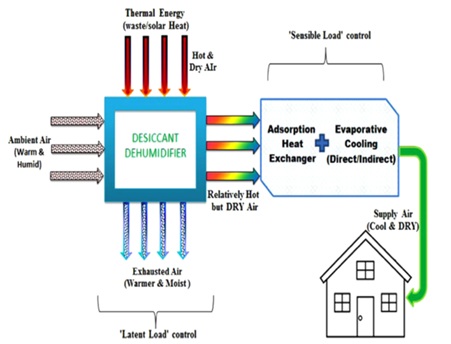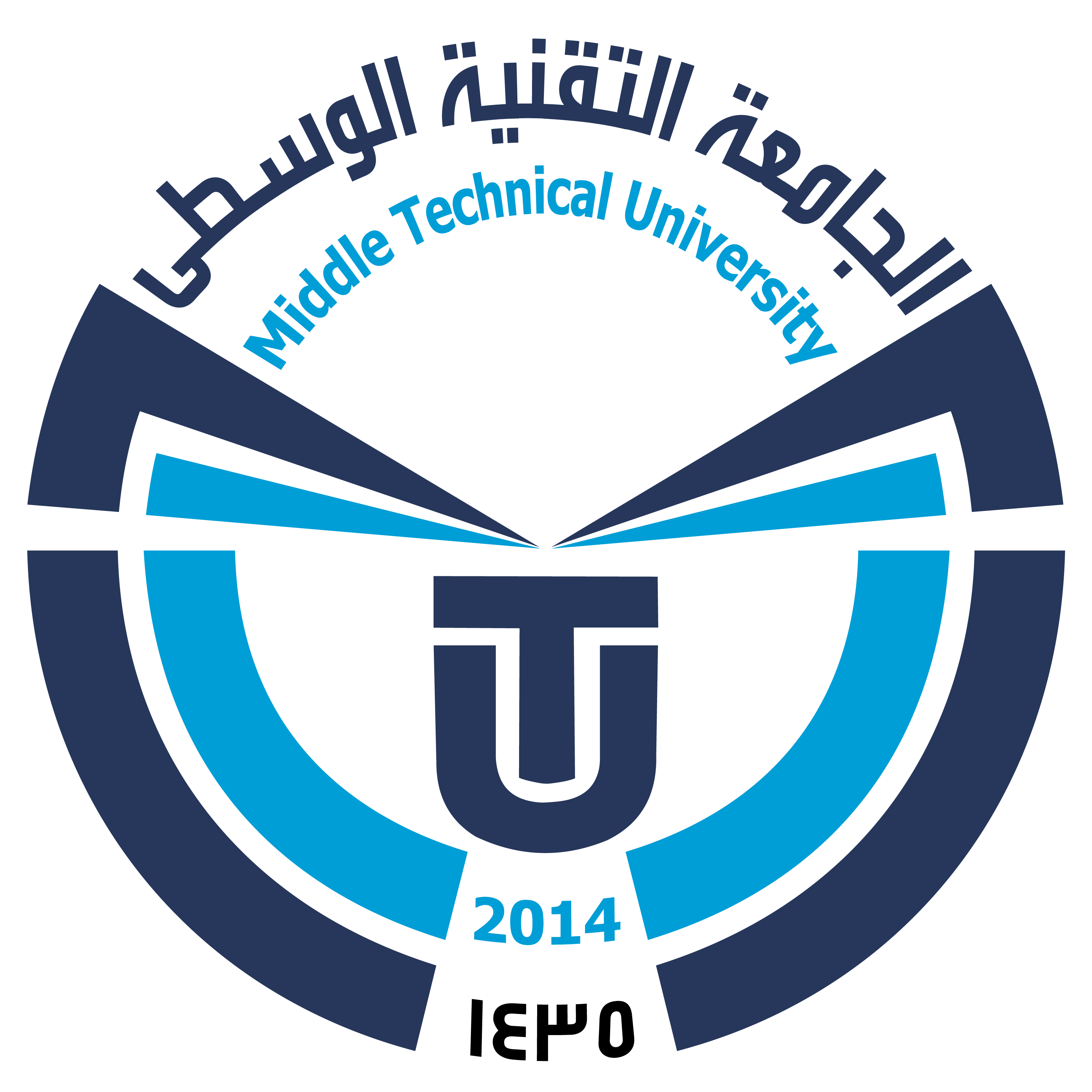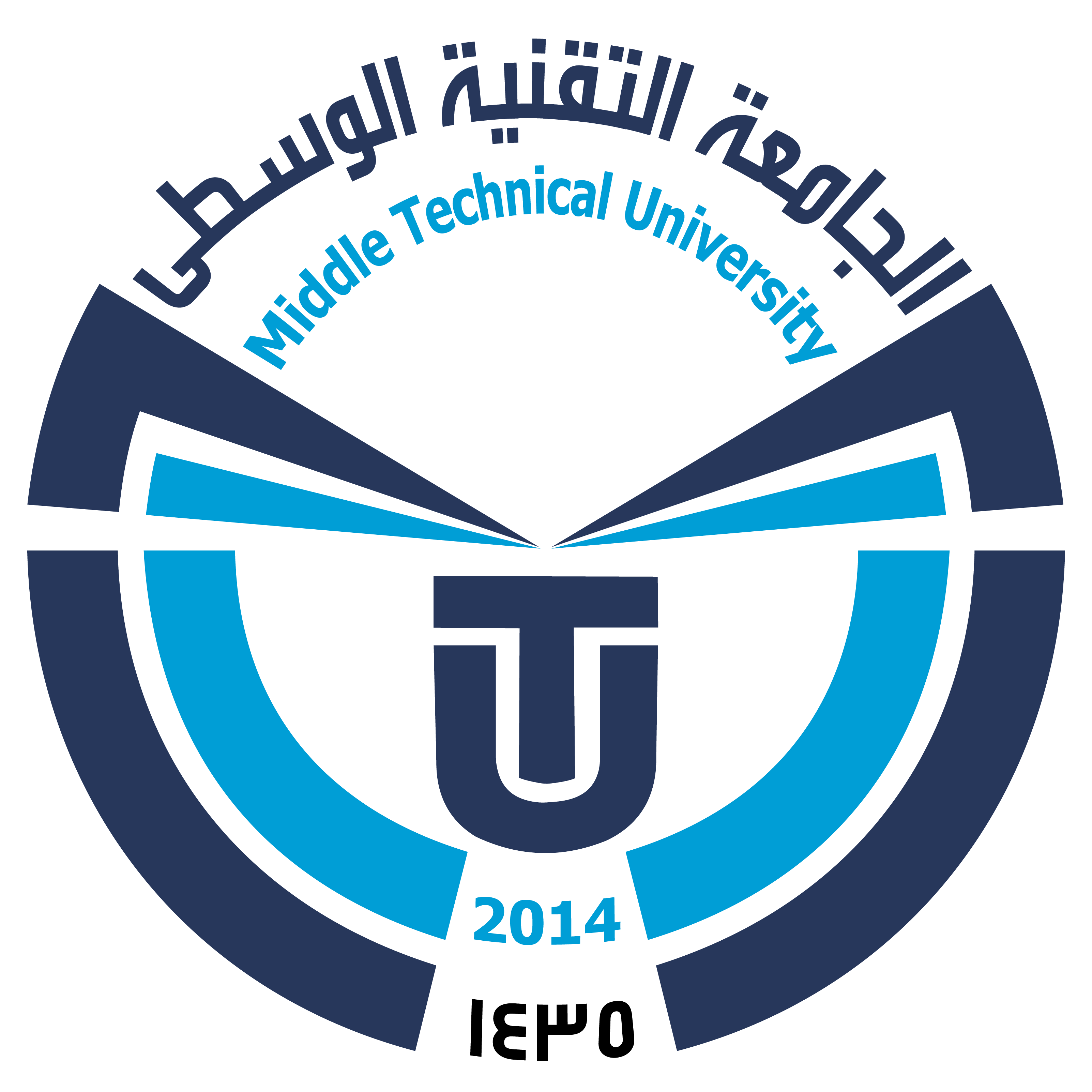Energy and Performance Analysis of Solar Solid-Dry Cooling Systems for Energy-Efficient Buildings in Tropical Regions
DOI:
https://doi.org/10.51173/jt.v7i1.2358Keywords:
Energy, Solar, Solid-Dry, Cooling Systems, BuildingsAbstract
In pursuing energy-efficient building solutions, renewable energy sources like solar power are increasingly utilized in ventilation and cooling systems. This study specifically investigates a solar-powered desiccant cooling system's performance against the traditional fan coil unit (FCU) in residential settings. It highlights the potential for energy savings and improved environmental outcomes. A model employing a solar heater with a vacuum tube is developed and simulated using TRNSYS to perform a critical thermal analysis of these systems. Key results show that increasing the input current to the collectors reduces the necessary collector area, thereby enhancing overall system efficiency. Energy evaluations reveal that the FCU, with a room moisture content of 79.4%, fails to provide adequate cooling due to its inability to meet the desired 45% moisture threshold. The drying process consumes the most energy, accounting for 38% of total usage. However, the solar hybrid dehumidifier cooling method demonstrates economic efficiency, achieving 18.4% in structures with high residual loads. Ambient temperatures and moisture content are effectively lowered to 24.8 – 25 °C, and 63%–67%, respectively, using the two-phase solar dehumidifier cooling device. This adjustment leads to 28.7% and 34.6% energy savings for convection and recirculating options. These findings underscore the potential of solar-powered systems to enhance energy efficiency and reduce environmental impacts in tropical climates.
Downloads
References
T. Yu, P. Heiselberg, B. Lei, M. Pomianowski, and C. Zhang, “A novel system solution for cooling and ventilation in office buildings: A review of applied technologies and a case study,” Energy Build., vol. 90, pp. 142–155, 2015. https://doi.org/10.1016/j.enbuild.2014.12.057
R. Vanaga, A. Blumberga, R. Freimanis, T. Mols, and D. Blumberga, “Solar facade module for nearly zero energy building,” Energy, vol. 157, pp. 1025–1034, 2018. https://doi.org/10.1016/j.energy.2018.04.167
M. Carrasco-Tenezaca et al., “Effect of passive and active ventilation on malaria mosquito house entry and human comfort: an experimental study in rural Gambia,” J. R. Soc. Interface, vol. 20, no. 201, p. 20220794, 2023. DOI:10.1098/rsif.2022.0794
U. Stritih, P. Charvat, L. Klimes, E. Osterman, M. Ostry, and V. Butala, “PCM thermal energy storage in solar heating of ventilation air—Experimental and numerical investigations,” Sustain. cities Soc., vol. 37, pp. 104–115, 2018. https://doi.org/10.1016/j.scs.2017.10.018
B. Purushothama, Humidification and ventilation management in the textile industry. Crc Press, 2024.
A. G. Kehbila, R. K. Masumbuko, M. Ogeya, and P. Osano, “Assessing transition pathways to low-carbon electricity generation in Kenya: A hybrid approach using backcasting, socio-technical scenarios and energy system modelling,” Renewable and Sustainable Energy Transition, vol. 1, p. 100004, Aug. 2021, doi: 10.1016/j.rset.2021.100004.
J. S. Abdullayev and R. E. Humbatova, “Hydrogen production and reduction of carbon emissions in Azerbaijan’s energy transition: challenges and prospects,” Azerbaijan Oil Industry, no. 03, pp. 21–28, Mar. 2023, doi: 10.37474/0365-8554/2023-3-21-28.
G. Xexakis and E. Trutnevyte, “Model-based scenarios of EU27 electricity supply are not aligned with the perspectives of French, German, and Polish citizens,” Renewable and Sustainable Energy Transition, vol. 2, p. 100031, Aug. 2022, doi: 10.1016/j.rset.2022.100031
Y. Yang, G. Cui, and C. Q. Lan, “Developments in evaporative cooling and enhanced evaporative cooling-A review,” Renew. Sustain. Energy Rev., vol. 113, p. 109230, 2019. https://doi.org/10.1016/j.rser.2019.06.037
H. Shen, X. Wen, and E. Trutnevyte, “Accuracy assessment of energy projections for China by Energy Information Administration and International Energy Agency,” Energy and Climate Change, vol. 4, p. 100111, Dec. 2023, doi: 10.1016/j.egycc.2023.100111.
C. A. A. Fernandez Vazquez, T. Vansighen, M. H. Fernandez Fuentes, and S. Quoilin, “Energy transition implications for Bolivia. Long-term modelling with a short-term assessment of future scenarios," Renewable and Sustainable Energy Reviews, vol. 189, p. 113946, Jan. 2024, doi: 10.1016/j.rser.2023.113946.
R. Stock, “Abolition solarities: Theorizing antiracist and anticapitalist solar energy insurrections,” Renewable and Sustainable Energy Transition, vol. 4, p. 100063, Aug. 2023, doi: 10.1016/j.rset.2023.100063.
M. Kamran, M. Raugei, and A. Hutchinson, “Critical elements for a successful energy transition: A systematic review,” Renewable and Sustainable Energy Transition, vol. 4, p. 100068, Aug. 2023, doi: 10.1016/j.rset.2023.100068.
J. Deng, T.-S. Wang, E. Zhu, S. Yuan, X. Liu, and X. Chai, “Dynamic Evaluations of a Scaled-Down Heat Pipe-Cooled System under Start-Up/shut-Down Processes Using a Hardware-In-The-Loop Test Approach,” SSRN Electronic Journal, 2023, Published, doi: 10.2139/ssrn.4372497.
I. Shchur, V. Shchur, I. Bilyakovskyy, and M. Khai, “Hardware in the loop simulative setup for testing the combined heat power generating wind turbine,” International Journal of Power Electronics and Drive Systems (IJPEDS), vol. 12, no. 1, p. 499, Mar. 2021, doi: 10.11591/ijpeds.v12.i1.pp499-510.
Z. Qi and R. Zhang, “Coordinated Scheduling of Micro-grid Combined Heat and Power Based on Dynamic Feedback Correction and Virtual Penalty Cost,” IEEE Transactions on Power Systems, pp. 1–12, 2024, doi: 10.1109/tpwrs.2023.3326066.
P. Conti, C. Bartoli, A. Franco, and D. Testi, “Experimental Analysis of an Air Heat Pump for Heating Service Using a ‘Hardware-In-The-Loop’ System,” Energies, vol. 13, no. 17, p. 4498, Sep. 2020, doi: 10.3390/en13174498.
T. B. H. Rasmussen, Q. Wu, and M. Zhang, “Combined static and dynamic dispatch of integrated electricity and heat system: A real-time closed-loop demonstration,” International Journal of Electrical Power & Energy Systems, vol. 143, p. 107964, Dec. 2022, doi: 10.1016/j.ijepes.2022.107964.
H. Mohammadi and M. Mohammadi, “Optimization of the micro combined heat and power systems considering objective functions, components and operation strategies by an integrated approach,” Energy Conversion and Management, vol. 208, p. 112610, Mar. 2020, doi: 10.1016/j.enconman.2020.112610.
L. Cioccolanti, R. Tascioni, M. Pirro, and A. Arteconi, “Development of a hardware-in-the-loop simulator for small-scale concentrated solar combined heat and power system,” Energy Conversion and Management: X, vol. 8, p. 100056, Dec. 2020, doi: 10.1016/j.ecmx.2020.100056.
P. Cerutti, “[Ground Heat Exchange: closed-loop geothermal heat-pump systems, legislation and regulation, needs and opportunities],” Acque Sotterranee - Italian Journal of Groundwater, vol. 11, no. 1, pp. 99–100, Mar. 2022, doi: 10.7343/as-2022-563.
M. BEZRODNY and S. OSLOVSKYI1, “Combined heat pump heating and ventilation system using heat of soil, sewage water and ventilation emissions,” Journal of Thermal Engineering, vol. 8, no. 4, pp. 466–476, Jul. 2022, doi: 10.18186/thermal.1145522.
M. A. Khan and H. Gohari Darabkhani, “Technoeconomic Analysis and Risk Assessment of Deploying Micro-Combined Heat and Power (M-Chp) Systems for Domestic Applications,” SSRN Electronic Journal, 2022, Published, doi: 10.2139/ssrn.4044506.
P. K. S. Tejes, G. Priyadarshi, and B. Kiran Naik, “Performance characteristics assessment of hollow fiber membrane-based liquid desiccant dehumidifier for drying application,” Applied Thermal Engineering, vol. 218, p. 119311, Jan. 2023, doi: 10.1016/j.applthermaleng.2022.119311.
Y. Wang, B. Ruhani, M. A. Fazilati, S. M. Sajadi, A. Alizadeh, and D. Toghraie, “Experimental analysis of hollow fiber membrane dehumidifier system with SiO2/CaCl2 aqueous desiccant solution,” Energy Reports, vol. 7, pp. 2821–2835, Nov. 2021, doi: 10.1016/j.egyr.2021.05.010.
J. K. Hong, I. Hwang, C. W. Roh, and M. S. Kim, “Performance investigation on electrodialysis regeneration of potassium formate desiccant solution for liquid desiccant air-conditioning systems,” Energy and Buildings, vol. 266, p. 112112, Jul. 2022, doi: 10.1016/j.enbuild.2022.112112.
T. Wen, Y. Luo, M. Wang, and X. She, “Comparative study on the liquid desiccant dehumidification performance of lithium chloride and potassium formate,” Renewable Energy, vol. 167, pp. 841–852, Apr. 2021, doi: 10.1016/j.renene.2020.11.157.
B. Cao, Y. Yin, F. Zhang, Q. Ji, and W. Chen, “Liquid desiccant-based deep dehumidifier working with a novel ionic liquid: Prediction model and performance comparison,” International Journal of Refrigeration, vol. 146, pp. 74–87, Feb. 2023, doi: 10.1016/j.ijrefrig.2022.09.033.
D.-S. Jeon, “Performance Evaluation of Packed-Bed Type Liquid Desiccant Dehumidifier using LiCl Aqueous Solution,” Korean Journal of Air-Conditioning and Refrigeration Engineering, vol. 36, no. 2, pp. 65–72, Feb. 2024, doi: 10.6110/kjacr.2024.36.2.65.
B. Guan, Z. Ma, X. Wang, X. Liu, and T. Zhang, “A novel air-conditioning system with cascading desiccant wheel and liquid desiccant dehumidifier for low-humidity industrial environments,” Energy and Buildings, vol. 274, p. 112455, Nov. 2022, doi: 10.1016/j.enbuild.2022.112455.
X. Liu, M. Qu, X. Liu, L. Wang, and J. Warner, “Numerical modeling and performance analysis of a membrane-based air dehumidifier using ionic liquid desiccant,” Applied Thermal Engineering, vol. 175, p. 115395, Jul. 2020, doi: 10.1016/j.applthermaleng.2020.115395.
D. B. Jani, “Experimental Assessment of Rotary Solid Desiccant Dehumidifier Assisted Hybrid Cooling System,” International Journal of Energy Resources Applications, pp. 5–13, Sep. 2022, doi: 10.56896/ijera.2022.1.1.002.
S. Choi and S. Choi, “Desiccant cooling assisted vapor compression system: A double stage desiccant cooling cycle via evaporative condenser,” Applied Thermal Engineering, vol. 198, p. 117456, Nov. 2021, doi: 10.1016/j.applthermaleng.2021.117456.

Downloads
Published
How to Cite
Issue
Section
License
Copyright (c) 2025 Saleh Radam Saal, Armaan Adamian, Ali Adelkhani

This work is licensed under a Creative Commons Attribution 4.0 International License.
















